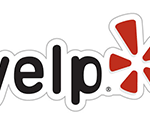SEO and PPC are often at odds. Yet the things they “bicker over” are actually areas for improved workflow and channel optimization.
Causes of friction between SEO and PPC often occur because we tend to use different sources of truth for each channel and build silos of communication between teams.
The main core areas of friction? Usually:
- Reporting
- Landing pages
- Budget
Here are five ways you can get your PPC and SEO campaigns working together.
Tip 1: Collaborate on first-party data readiness
All digital marketing campaigns need to account for first-party data.
Understanding whether your brand is compliant requires input from both your SEO and PPC teams.
If you rely heavily on remarketing campaigns (either because you’re in an expensive industry or the customer journey naturally takes multiple steps), you may find yourself increasingly reliant on native audiences.
While some of these audiences can be powerful, most of them underperform against audiences based on brand-tracked activity.
Analytics audience segments can be a powerful way around fluctuating quality.
These audience segments still require consent and the new global site tag. Make sure your tag is updated to GA4.
As you set up cookie consent, it’s important that the module follows cumulative layout shift (CLS) rules. As a general rule, modules on the bottom of the page tend to do better as they don’t distract from the user’s purchasing journey, and carry less CLS risk.
Make sure that first-party data collected is protected (either hashed and synced through tools, or immediately deleted once it’s been uploaded into ad accounts).
Collaborate with your SEO team’s content campaigns to ensure there are engaging hooks to create consensual conversations.
A final note about analytics
One big drawback in the current roll-out of GA4 and conversion modeling is that advertisers need to choose between using analytics as their source of truth versus harnessing the power of enhanced conversions.
Enhanced conversions require using native Google conversion tracking. While enhanced conversion tracking will give you a better idea of what paid campaigns are doing, the numbers will always be off from what your SEO team reports.
In the interest of trust and data continuity, it may make sense to take the “hit” on PPC-reported numbers so long as the overall metrics point to positive ROAS.
Going with enhanced conversions means being ok that reports will be different and all parties need to be ok with that.
Tip 2: Acknowledge and adapt based on domain structure choices
There are three ways to set up brand URLs:
- One domain for everything (including international).
- Subdomains for various initiatives.
- Vanity domains and country domains.
Regardless of what path you take, PPC-specific pages need to be noindex/nofollow and allow for the adbot to access them so they can contribute to quality score.
It’s rare that non-ecommerce brands will be served better by keeping everything on the same domain. That’s because there are strategic elements of a well SEO’d site that can run counter to PPC:
- SEO doesn’t want duplicate content, and PPC benefits from testing templates.
- SEO benefits from a robust navigation bar, while PPC does better with limited choices for user action.
- SEO might need to redirect a page, which will cause the ad to get disapproved (three strikes in a 90-day period causes the ad account to get suspended).
These pitfalls are easily mitigated by having subdomains that can still benefit the main domain, without forcing creative or technical compromises between the SEO and PPC teams.
Additionally, a subdomain will allow you to keep the same analytics property and branding continuity.
If you are forced to use the same landing page for PPC and organic traffic, make sure that any redirects are communicated at least three to five days before it will happen. This will give the PPC team time to adjust the creative so you’re not wasting money sending traffic to a broken page until Google disapproves the ad.
Conveying inventory is also really important for both PPC and SEO.
If your product is constantly out of stock, it will eventually get penalized by the search engines. Make sure all campaigns are made aware of inventory issues so they can exclude products from paid campaigns, as well as apply the out-of-stock schema to the organic page.
Tip 3: Bring transactional intent & CRO to all pages
SEO often gets unfairly pigeonholed as the “research” channel, while PPC is often accountable exclusively for transactions.
While there are some valid reasons to think about traffic in that way, there are lessons in building trust and enabling transactions each can learn from the other.
For example, while it’s true that PPC pages lean towards less content, there still needs to be options to understand the product/service. This content (written or in video format) should be below the fold, keeping the path to conversion clear.
On a similar note, SEO requires rich and authoritative content to rank well. Yet if the path to conversion is buried (or not there at all), the traffic will be all fluff.






